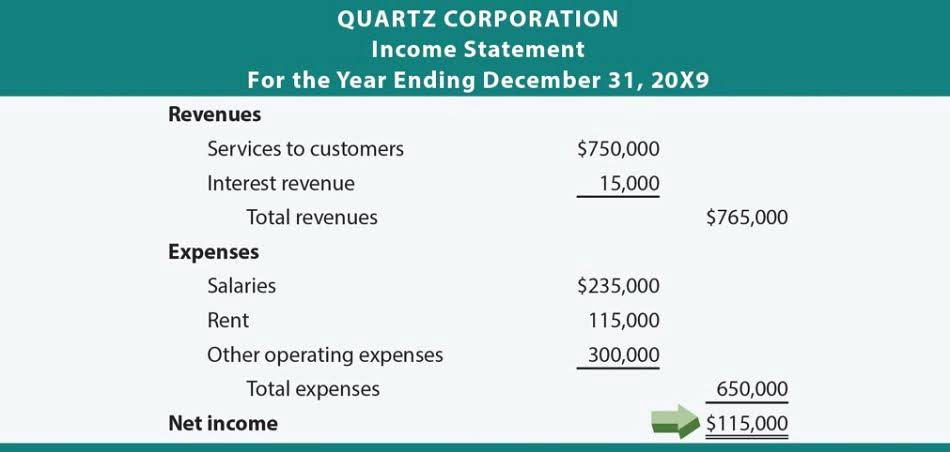
- Uncategorized
- February 22, 2023
- No Comments
Operating Cycle: Definition, Formula, Calculation, Examples

It encapsulates the journey from purchasing raw materials to collecting revenue from sales, serving as a barometer for assessing the efficacy of a company’s resource and financial management strategies. A related concept is that of net operating cycle which is also called the cash conversion cycle. The net operating cycle subtracts the days a company takes in paying its suppliers from the sum of days inventories outstanding and days sales outstanding.
Purchase of Raw Materials
- In this article, we will delve into the intricacies of the operating cycle, explore its components, discuss the importance of calculating it, and provide practical tips for improving and managing operating cycles effectively.
- The business, through this calculation, can check the total time taken from receiving the inventory to storing them, selling them, and customers paying for them.
- Overall, the importance of calculating the operating cycle cannot be overstated.
- Have you ever wondered how businesses seamlessly convert investments into cash, ensuring smooth financial operations?
- Having less account receivables can also better many other ratios for the business, which are important for investors who may want to provide money for funds.
- For example, if you manage to recover your debts on time, there is a much lower possibility of bad debt and subsequent accumulation.
You find the average inventory, then divide it by the cost of goods sold (COGS). These case studies underscore the importance of effectively managing the https://www.bookstime.com/ in different industries. By implementing tailored strategies and optimizing key components, businesses can achieve more efficient cash conversion, enhance financial stability, and position themselves for sustained growth and profitability.
Strategies for Improving Operating Cycles
This knowledge can help individuals make informed decisions about where to work and build their careers. Effective inventory management is critical for streamlining the operating cycle. Businesses must strike a balance between having enough inventory to meet demand and avoiding excess stock that ties up valuable resources.

What Is The Operating Cycle Formula?

The Operating net cycle (NOC) refers to the period between paying for inventory and cash collected through the sale of receivables. Investors can determine a firm’s investment quality by tracking its OC’s historical record and comparing it to peer groups in the same industry. The operational cycle is significant because it may notify a business owner how soon goods can be sold. The NOC computation differs from the first in subtracting the accounts payable period from the first because the NOC is only concerned with the time between purchasing items and getting payment from their sale.

Inventory Period and Accounts Receivable Period
- We reached out to industry experts to gather their insights on how businesses can effectively manage their operating cycles.
- In today’s competitive job market, both job seekers and employers face numerous challenges.
- By efficiently handling inventory, accounts receivable, and accounts payable, you can shorten your cycle, improve cash flow, and boost profitability.
- Get instant access to lessons taught by experienced private equity pros and bulge bracket investment bankers including financial statement modeling, DCF, M&A, LBO, Comps and Excel Modeling.
- This integration allows businesses to leverage existing systems and data, significantly enhancing overall efficiency and accuracy.
Understanding the components of an operating cycle is crucial for both job seekers and employers in today’s competitive market. The operating cycle represents the time it takes for a company to purchase inventory, convert it into products or services, sell those products or services, and receive cash from customers. By familiarizing yourself with the key components of an operating cycle, you can gain insights into how businesses operate and make informed decisions. A negative operating cycle occurs when a company’s accounts payable (DPO) period is longer than the combined inventory days and days sales outstanding (DSO) periods. This situation is rare and indicates that the company can collect cash from customers before paying suppliers, resulting in a source of cash flow. Employers looking to streamline their operations and boost profitability should pay close attention to their operating cycles.
- You’ll explore the components, calculation methods, practical strategies, key performance indicators, and the tools needed to master the art of optimizing your operating cycle for enhanced efficiency and profitability.
- Integration between these tools can enhance your ability to manage and optimize your operating cycle effectively.
- Therefore, while the operating cycle focuses solely on the time to turn inventory into cash, the cash cycle provides a fuller picture by factoring in how long the company can delay payments to suppliers.
- When a company manages its inventory well, it can sell items quicker and collect payments faster too.
- An operating cycle refers to the number of days it takes for a company to convert its investment in inventory, accounts receivable (A/R), and accounts payable (A/P) into cash.
Delays in receiving payments can significantly extend your operating cycle formula, impacting your cash flow and overall financial health. An operating cycle refers to the number of days it takes for a company to convert its investment in inventory, accounts receivable (A/R), and accounts payable (A/P) into cash. Efficient operating cycles play a crucial role in the success and sustainability of businesses across various industries. By understanding the impact of optimizing the operating cycle, companies can enhance their financial health, streamline operations, and ultimately improve their bottom line. “For businesses, it’s essential to monitor key performance indicators related to the operating cycle regularly. This data can provide valuable insights into where improvements can be made to enhance efficiency.” For example, the days sales outstanding value could be higher simply because the process to collect the credit purchases is inefficient and needs to be worked on.

The Benefits of Improving Operating Cycles
Step 3: Calculate the Operating Cycle

